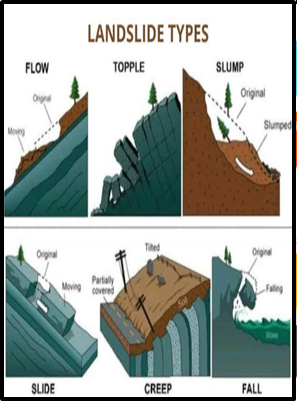“DEVASTATING LANDSLIDES AND RAIN CLAIM LIVES, STRAND TOURISTS IN SIKKIM”
Why in the news?
- Six people were killed, and 1,500 tourists were stranded due to landslides and heavy rain in Sikkim’s Mangan district and north Bengal.
- Torrential rains caused flooding and infrastructure damage, including the collapse of a bridge and blocked roads, leading to evacuation alerts.
About landslides:
- A landslide is the downward movement of rock, soil, and debris on a slope.
- Scale: It ranges from small shifts to large, destructive events.
- Causes: Triggered by factors like heavy rainfall, earthquakes, human activities, and changes in groundwater levels.
- Types: Classified into slides (rotational and translational), flows (earth flows, debris flows, mudflows, and creep), spreads, topples, and falls.
source:geolearn
Key Government Initiatives to Mitigate Landslide Risk:
Key facts about Sikkim:
Associated Article: |




